 !
!
| Jan - Dec. 2017 | Jan - Dec. 2016 / | July - Dec. 2015 / | Jan - June. 2015 / | July - Dec. 2014 / | Jan - June. 2014 / | July - Dec. 2013 |
|---|
April 27, 2017
TNR in Hamilton: It's Catching On
This fellow says: "It's time to spread the word about TNR!"
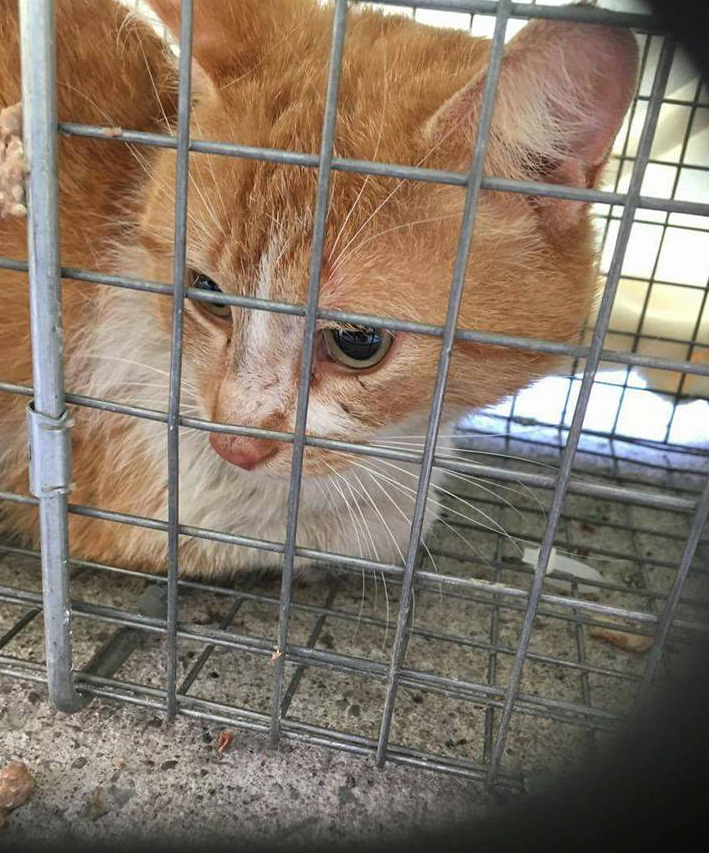
He's one of over a dozen strays who was TNR'd last weekend. After being trapped, he was transported to a vet to be neutered, microchipped, left-ear tipped and given his rabies and FVRCP vaccines and his Revolution treatment.Then, he was returned to the back alley that is his home to become a proud member of an HBSPCA registered Colony. With a caregiver committed to keeping an eye on him, feeding him regularly and providing him with shelter come next winter, life for him has just gotten a whole lot better. One cat, another cat; one Colony, another Colony, TNR (trap-neuter-return) is catching on in Hamilton. That's good news for these cats and for the people who care about them. And, because TNR effectively addresses health and nuisance issues and is the only practical, effective, humane way to deal with the problem of cat overpopulation, it's good news for everyone. That TNR is gaining momentum quickly now in Hamilton is due to the co-operative effort of three entirely donor-funded local groups:
HBSPCA TNR program which registers colonies and schedules vet appointments, is actively involved in public education on TNR, committed to doing it properly and to working collaboratively with Hamilton Street Cats (HSC) and the Hamilton Community Cats Network (HCCN).
Hamilton Street Cats (HSC) - is a group of volunteers who are actively involved in trapping, transporting, fundraising, supporting caregivers and facilitating access to TNR (and spay/neuter generally). For stories about the cats and the colonies and to follow what these volunteers are doing check here
Hamilton Community Cat Network (HCCN) is facilitating the conversation about TNR through social media and involving more and more volunteers in local efforts to improve the lives of our street/community cats. For an exchange of ideas, notices of upcoming sessions, public talks and workshops, and to become part of what's happening, check here
Spreading the word about TNR in Hamilton is a high priority for each of these groups; many public events being held this year are, like this upcoming TNR 101 session, a collaborative effort.
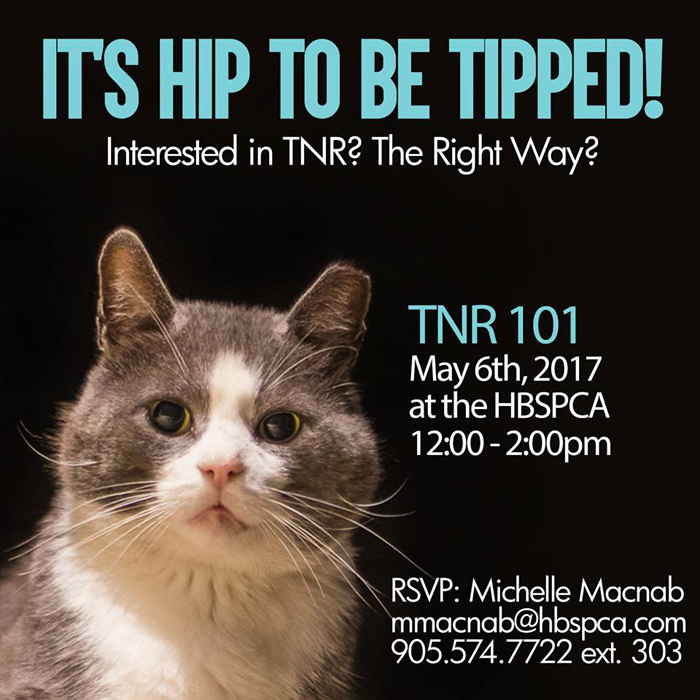
****
February 21, 2017
Cat Rescue in Hamilton: Putting faces to the number
For a very long time, cat rescue in Hamilton was defined, and greatly limited, by an urgency to get cats out of the city-run shelter. Even with the help offered by out-of-town groups, far too many cats (50% or more) were being left behind and ending up euthanized. The race to get as many as possible out of there was heart-wrenching and seemed never ending.
Only when the City began to enact measures to curb intake could things start to change.
By 2015, intake was down to 1/3 of what it had been in 2006; 1,821 (83% of the total of 2,197) were saved. With far fewer needing to be rescued from inside and a euthanized rate of 17%, comparable to that in other cities, it became possible for local rescue groups to broaden their focus and do much more to help cats before they landed inside. Rescuing from the Shelter became a smaller part of a larger rescue effort in this city.
Combined year-end 2016 stats from a recent survey of local independent groups tell us that about 1/3 (1,210) of the more than 4000 cats rescued by them last year were from the Shelter. In other words, over 2/3 had been rescued before (instead of after) landing inside.
Numbers are important! Too often they fail to catch our attention. That’s because, when we think of hundreds and hundreds of cats, the faces blur and the stories get lost. It's only when we focus on one cat at a time that the numbers come to life and we begin to understand why they matter.
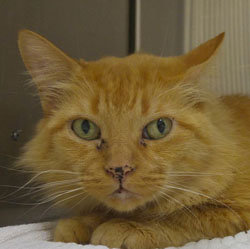 When rescued, Chili’s mouth was full of kicked-in teeth; she was malnourished, frightened and exhausted. Major dental work was done and huge cysts (on her "lady parts") were removed just before they burst. In her foster home, she rested, recovered and learned to trust humans. Waiting now to be adopted, she’s one of a total of 450 taken in directly from the streets of downtown Hamilton in 2016 by PantryFourPaws.
When rescued, Chili’s mouth was full of kicked-in teeth; she was malnourished, frightened and exhausted. Major dental work was done and huge cysts (on her "lady parts") were removed just before they burst. In her foster home, she rested, recovered and learned to trust humans. Waiting now to be adopted, she’s one of a total of 450 taken in directly from the streets of downtown Hamilton in 2016 by PantryFourPaws.
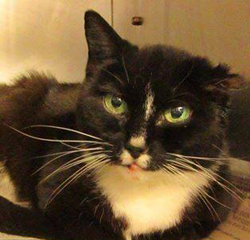
Curcat was rescued from inside just before the Shelter closed for Christmas. Her cauliflower ear was a mess, her back was covered with open sores and she needed dental work too. She’s healthy now and, with a lively sparkle in her eyes, eager to be adopted. She’s one of a total of 1,376 cats rescued by NCWL in 2016. 385 of these had had come (like Curcat) from inside the Shelter; the rest were from the streets, hoarding situations or owners unable to care for them.
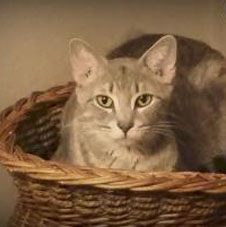
When rescued as a protection case, Fancy was struggling to keep her 6 tiny kittens alive. Quickly settled in to a foster home, they received treatment for their serious eye infections and the care they urgently needed. All the kittens thrived and were quickly adopted and, a while later, Fancy got her chance at a new beginning. She and her kittens were among the 1,325 rescued by HBSPCA in 2016. 681 had been rescued from inside the city-run shelter and the rest had arrived either as owner surrenders or (as Fancy had) through their protection program.
Chili, Curcat and Fancy are the cats most recently featured on our adoption page. They are three of the hundreds and hundreds of cats who were rescued in Hamilton last year by local, independent, privately funded groups. It’s the face of each of these cats that gives meaning to the rescue numbers.
****
Febuary 7, 2017
What's Happening to Cats at HAS?
Only the numbers can tell us
RHC, starting in 2013, posted up-to-date shelter data provided to us by HAS regularly on our website. This served as a way for the public to stay tuned to changes underway at HAS and to keep current on what was happening to cats at the city-run shelter.
Initially, this information came weekly; then monthly.
Then, in early 2016, the City stopped sending us data, announcing they'd be posting reports quarterly on a newly created Animal Shelter Statistics page on the HAS website. We posted a News Alert on May 1st, directing those who had been regularly checking our site for updates to their page.
HAS did post a 1st quarter (January 1 to March, 31) 2016 report, in which they stated that the Intake (of all animals) was down by 23% and the number of euthanized was down 13% from the same quarter the previous year. Calculations based on the data provided at the bottom of their page showed both claims to be inaccurate. (Total 1st quarter Intake in 2016 was 620 compared to 654 in 2015 and Total 1st quarter Euthanized # was 83 compared to 88 in 2015). HAS was informed of this in April 2016.
To date, nothing further has been posted on their page. To enquiries as to why 2nd, 3rd or 4th quarter data has not been made public, HAS gave various reasons including: problems correcting errors identified on the already posted page, no time due to staff holidays, difficulties verifying data being collected, and management directives to give priority to other programs and proposals.
Without access to up-to-date data, we continue to refer to our report completed February, 2016 that focused on changes from 2014 to 2015 and provided graphs illustrating 10 year downward trends in intake and euthanized numbers.
However, this loss of transparency is unfortunate. Without 2016 statistics, it is not possible to know whether or not these earlier trends continue or whether the lowest-ever euthanized rate (of 17%) for cats has been maintained.
And the question: “What’s happening to cats at HAS?” becomes once again open to misleading claims and uninformed speculation
****
January 16, 2017
More than 3,476 Hamilton Cats
Re-homed in 2016
3,476 Hamilton cats found loving homes last year according to numbers made available by local animal welfare groups.
It's still early January and already the 6 groups listed on RHC’s Adoption page have reported their 2016 year-end stats. We're still waiting to hear from some other groups; so, that total is likely to rise by as much as a few hundred. Clearly, as it stands now, it's a pretty amazing number!
For each of these 3,476 cats and kittens what it means is a happy, rather than a tragic, ending to their story. Many had been strays or abandoned to the streets where they had been suffering and struggling to survive. Many more had come from homes where the owners had become too old, too ill, too disabled or too poor and were simply unable to look after them anymore. And several hundred had been rescued from hoarding situations or homes where they had been living in squalor or subjected to cruelty.
Very few of these rescued cats were immediately ready for adoption. Virtually all needed to be spayed/neutered, vaccinated, given rabies shots and flea treatments and dewormed before being put up for adoption. A large proportion also required veterinary services including diagnostic tests (X'rays, blood work, etc.), surgeries (dentals, setting fractures, amputations, etc.), medications and special diets. And many more were so scarred or traumatized from their experiences that they needed help to get over shyness, aggressiveness or disturbing behaviours (like peeing outside the litter box or trying to escape through the door) before being adoptable.
Helping these cats takes time, skill, commitment and… money.
Every cent of the adoption fees these groups collect goes right back into paying the bills for vet costs, food, litter and other essentials. It's never enough on its own. As all of these groups running effective adoption service know, continuing to do the work relies on donations (large and small). Donors want to know how their money is spent - and that it is spent well.
A reason to celebrate this remarkable 2016 adoption number is that it is adoption that keeps the whole rescue effort moving: every cat adopted leaves space for another to be rescued. Local adoption services are doing a great job and rescue efforts in this city are getting off to a good start in 2017.
****
It's cold outside!
January 8, 2017
While owned cats are staying close to home and keeping warm inside, many strays are out there shivering.
This January 21 event is a great opportunity to learn, connect and do something really practical for these less fortunate Hamilton cats.
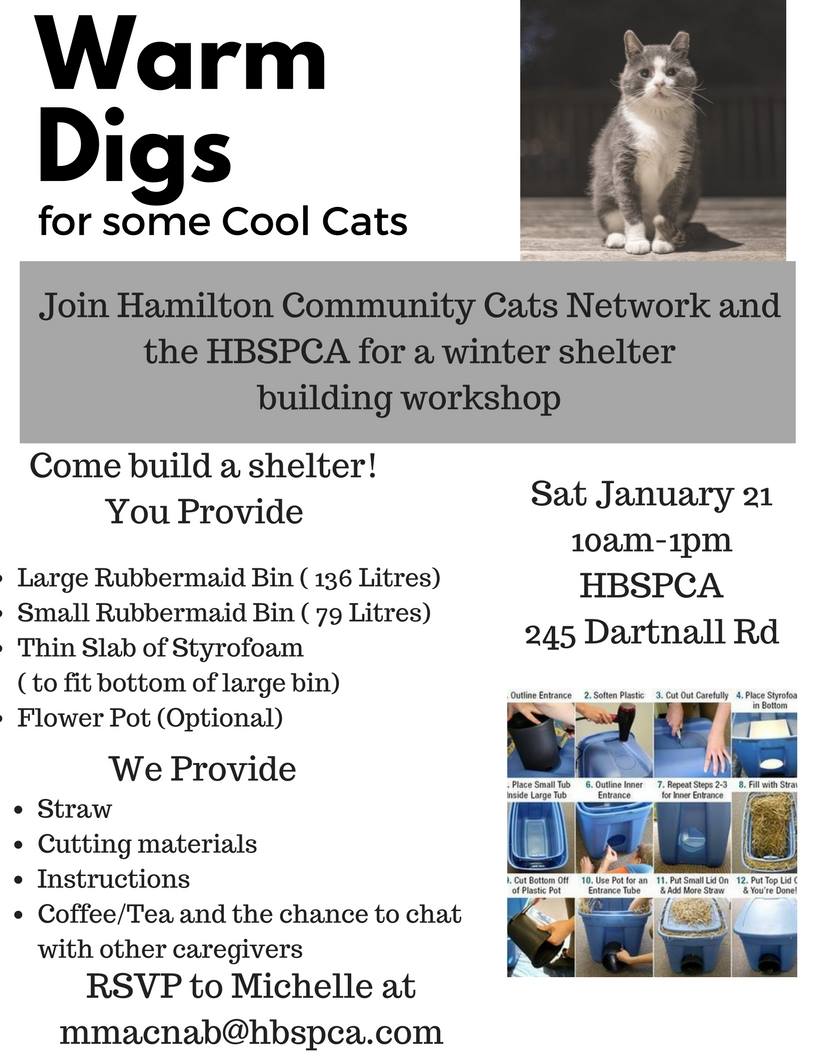

HOME - ABOUT US - MEOW BLOG - ADOPTION - HELPING CATS - INFO - Q&A - FIND LOST CAT
All text and images are copyrighted. Any use is by permission only.
Last update: February 3, 2018